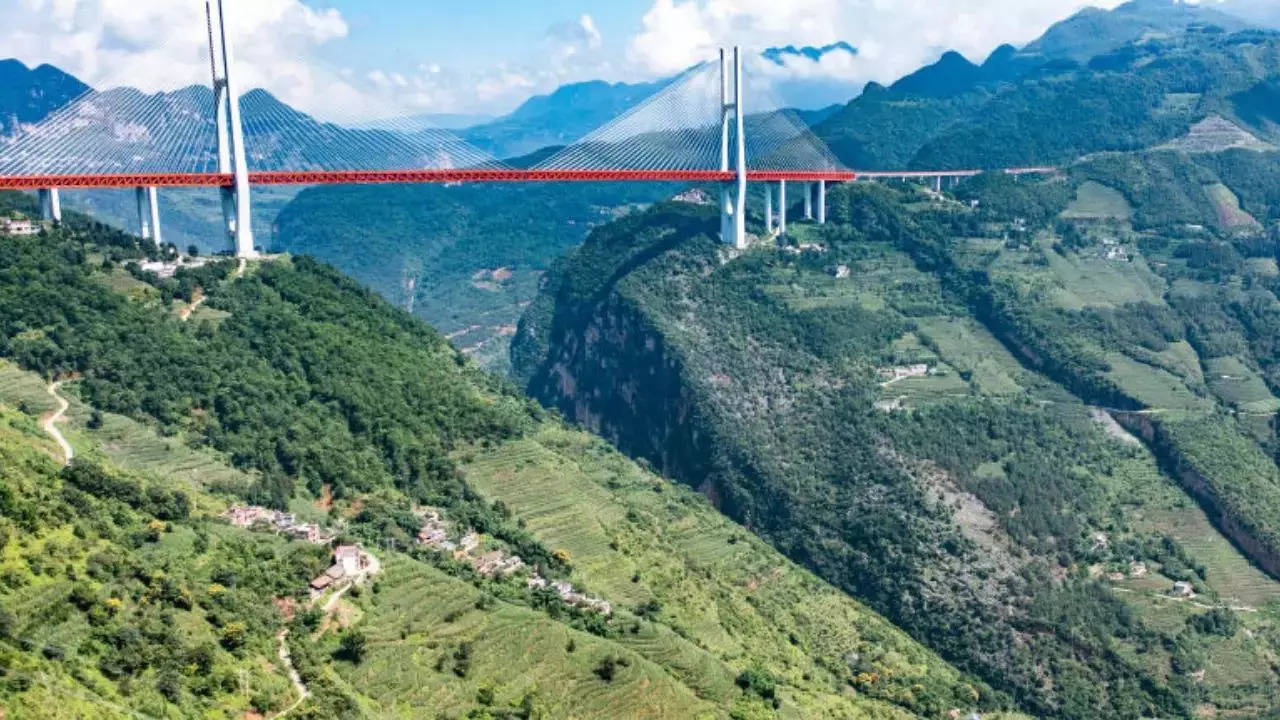Beipanjiang Bridge: The World's Highest Motorable Marvel Among the Clouds

In the heart of Southwest China, a modern engineering marvel stands tall— the Beipanjiang Bridge . Connecting the provinces of Yunnan and Guizhou, this extraordinary structure has earned its place in the Guinness Book of World Records as the highest motorable bridge in the world. Soaring 565 metres (1,854 feet) above the Beipan River valley, the bridge not only symbolises the incredible advancements in engineering but also serves as a vital link for one of China’s most remote and challenging regions.
A Lifeline for Remote Regions
Completed in 2016, the Beipanjiang Bridge transformed travel between Yunnan and Guizhou, two provinces that were once notoriously difficult to traverse. Prior to its construction, the journey across the mountainous region was a winding, arduous trek that could take hours. Now, thanks to the bridge, this trip can be completed in just minutes, significantly improving the connectivity between these regions and enhancing the lives of the local population. The bridge stands as a lifeline for both economic and social development, opening up previously inaccessible areas to trade, tourism, and business opportunities.
A Record-Breaking Structure
The Beipanjiang Bridge is not just remarkable for its height but also for its scale and complexity. Spanning 1,341 metres in total length, it ranks as the second-longest steel truss girder cable-stayed bridge in the world. The main span, which stretches 720 metres, is supported by a combination of steel and concrete. These materials, combined with advanced cable-stay technology, ensure the bridge’s stability over the deep valley it spans.
Its record-breaking height makes it a global icon, capturing the attention of engineers and enthusiasts worldwide. The Beipanjiang Bridge’s design had to account for various challenging factors, including harsh weather conditions and the complex topography of the region. Despite these obstacles, it stands tall, a testament to human ingenuity.
Engineering Challenges and Solutions
Constructing a bridge at such an incredible height and across a landscape as complex as the Beipan River valley posed numerous challenges. The region is known for its extreme weather conditions, including heavy rainfall and intense winds, which made construction particularly difficult. Additionally, the geological conditions of the valley required meticulous planning to ensure the bridge's foundations would remain stable.
Construction took three and a half years to complete, a relatively short period considering the difficulties involved. Teams of engineers and workers from across China collaborated to overcome these challenges, employing cutting-edge technology to ensure the bridge’s safety and longevity. Precision and efficiency were key to completing the project, and the end result is a structure that is not only functional but also an architectural wonder.
Economic Impact and Cost
The Beipanjiang Bridge was constructed at a cost of USD 144 million (over 1 billion yuan). While the investment was substantial, the benefits it brought to the region far outweigh the costs. By drastically reducing travel times, the bridge has improved logistics, tourism, and accessibility in the region, contributing to the local economy's growth.
For the remote communities in Yunnan and Guizhou, the bridge has meant easier access to essential services such as healthcare and education. Farmers and businesses in these provinces now have quicker routes to markets, helping them to expand their operations and boost their livelihoods.
A Global Icon of Modern Engineering
Beyond its practical benefits, the Beipanjiang Bridge has become a symbol of what can be achieved through engineering and determination. The structure has garnered international acclaim, and its record-breaking status continues to attract visitors and tourists eager to witness this towering achievement in person.
The Beipanjiang Bridge has also inspired other infrastructure projects across China and the world, showcasing that it is possible to build large-scale projects in even the most rugged terrains. It exemplifies the cutting-edge technology and forward-thinking mindset that characterises China's rapid infrastructure development in recent years.
A Symbol of Progress and Innovation
The Beipanjiang Bridge is much more than a connection between two provinces; it represents the future of infrastructure development. As the world’s highest motorable bridge, it stands as a symbol of progress, innovation, and the determination to overcome the most formidable obstacles. Its successful construction not only connects Yunnan and Guizhou but also showcases what can be achieved through human ingenuity and engineering excellence.
As China continues to modernise and expand its infrastructure, the Beipanjiang Bridge remains an iconic reminder that even the most challenging environments can be conquered with vision, technology, and perseverance.
Next Story